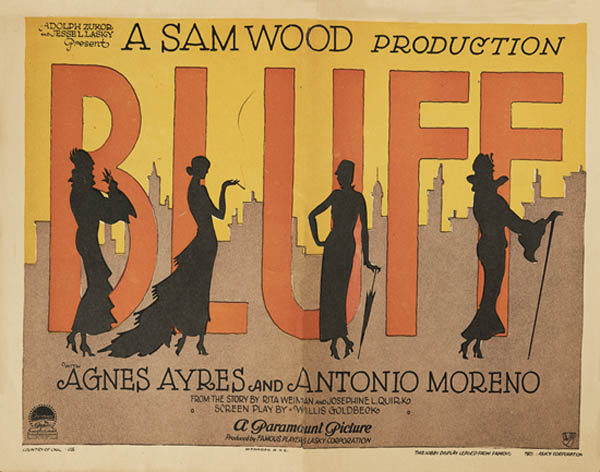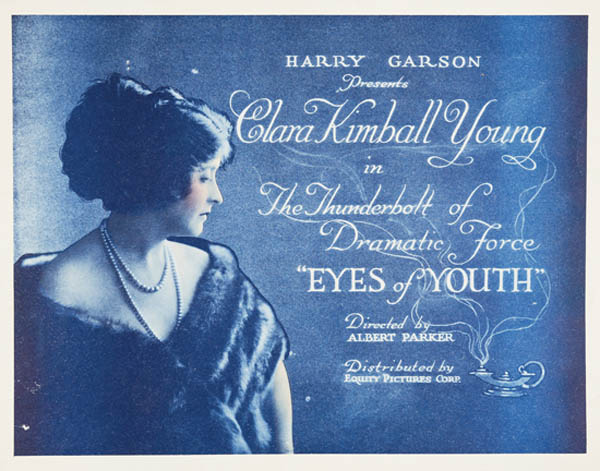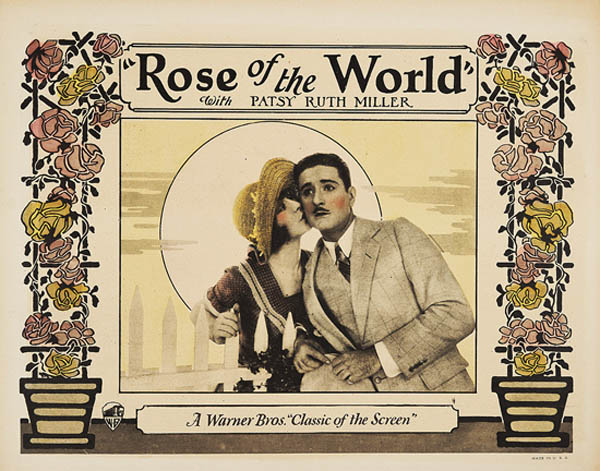Worlds Largest Collection Of Silent Film Lobby Cards With A Focus On Female Filmmakers Goes On View
The Dwight M. Cleveland Collection Highlights Unsung Contributions Of Women Working Behind The Camera In Silent-Era Hollywood
April 30, 2021
A major exhibition of lobby cards from the silent film era highlighting the untold stories of womens contributions to the early film industry will go on view at New Yorks Poster House next year. Behind the Camera: The Unknown Women of Hollywood draws on a unique collection of posters and ephemera assembled by the Chicago-based collector Dwight M. Cleveland, who has spent nearly half a century accumulating what is believed to be the largest privately held film poster archive in history. The exhibition marks the first time that these lobby cards, a recent addition to Clevelands collection, have been exhibited in a museum setting. On view from April 7 through Oct. 9, 2022, Behind the Camera will provide a rare glimpse into the understudied histories of female filmmakers who worked in Hollywood during the silent era, offering a powerful corrective to the misperception that early American cinema was an exclusively male industry. These stories are illuminated through the unique medium of lobby cards, a form of graphic advertising that dates back to the earliest years of theatrical film exhibition, when studios began to advertise in movie theater lobbies as a means of promoting their latest releases. Often painstakingly handcrafted during a period before color printing became commonplace, these cards became a miniature art form in their own right, reflecting and advancing the graphic design aesthetics of what was then an emerging field of commercial advertising. At a time when Hollywood star culture was still in its nascency, these lobby cards also offered studios the opportunity to spotlight the artists and craftspeople who worked behind the camera, which included women at all levels of production, from costuming, set design, and editing to screenwriting, producing, and directing. The lobby cards featured in Behind the Camera were acquired by Cleveland, a real estate developer and historic preservationist who has long been at the forefront of film poster collecting and advocacy. After deaccessioning his archive of more than 40,000 film posters in 2016, Cleveland retained more than 4,000 posters, lobby cards, and other ephemera, including many objects that are unique or were produced in limited editions. Portions of Clevelands collection have been donated to the Library of Congress, the Academy of Motion Picture Arts and Sciences, and other international institutions like the Bill Douglas Cinema Museum at the University of Exeter in the United Kingdom. In recent years, Cleveland recalibrated his collection to highlight female filmmakers as well as other film artists and craftspeople from underrepresented minorities. This sub-collection numbers 12,000 silent film posters, lobby cards and stills; 40 of these works will go on view for the first time in the Poster House exhibition, which is organized by the museums chief curator Angelina Lippert. Poster House is thrilled to partner with Dwight Cleveland to introduce this important, never-before-seen collection of lobby cards, which highlight the myriad roles women played in the early film industry, said Lippert. In addition to being incredibly rare-- most of these are the only known copies--the lobby cards beautifully display the dynamic graphics of the time period while telling a captivating story of how women helped shape Hollywood. Selected works from Clevelands collection of historic movie posters went on view in 2019 in a celebrated exhibition at the Norton Museum of Art in West Palm Beach, Fla. That year also saw the publication of Cinema on Paper: The Graphic Genius of Movie Posters, a major monograph highlighting the collection, which was distributed by Assouline Publishing, the first time that this distinguished publisher had ever released a book solely focused on film posters. Turner Classic Movies Ben Mankiewicz and the noted graphic arts scholar Steven Heller both wrote introductions to the book. These milestones reflect Clevelands decades of advocacy to encourage the study and exhibition of film posters as a popular art form in their own right, one that reflects the historical and artistic developments of the past 120 years, and the often-overlooked individuals and communities who contributed to them. The 40 lobby cards selected for Behind the Camera date back to the early 1910s and extend through the conclusion of the silent era in the late 1920s. Because of the fragility of their production materials, each of these lobby cards is believed to be the sole extant copy from its respective printing. The cards in the exhibition spotlight female film artists such as Alice Guy-Blach, Lois Weber, Marian Ainslee, Zo Akins, Dorothy Arzner, Margaret Booth, Adele Buffington, Lenore J. Coffee, Beulah Marie Dix, Lady Duff Gordon, Edith Head, Anita Loos, Jeanie Macpherson, Frances Marion, Bess Meredyth, Zelda Sears, Blanche Sewell, Adele Rogers St. John, Jo Swerling, Dolly Tree, Eve Unsell, Sophie Wachner, Gwen Wakeling, and Dorothy Yost, as well as many other little-known women who contributed at every level of the early film industry. What we have in this remarkable collection is not just proof of how many women worked behind the camera; we have the very artifacts of their artistry, said Jane Gaines, a film professor at Columbia University, supervisor of the Women Film Pioneer Project and author of Pink-Slipped: What Happened to Women in the Silent Film Industries? (2018). When I first became aware of this remarkable collection of lobby cards, I knew it was an opportunity to reshape my own collecting practice by illuminating the essential contributions of women to early Hollywood, a seldom-told story that feels ever more relevant as todays entertainment industry strives to finally live up to its ideals of gender equity and inclusivity, said Cleveland. Im proud to share these stories with the world through this exhibition with Poster House, and I look forward to more opportunities to make this collection accessible to the public. In conjunction with the exhibition, Poster House will mount a series of interpretive and educational programs related to the history of women in silent-era Hollywood. A full roster of programming will be announced in early 2022. For the latest updates, visit www.posterhouse.org.





SHARE
PRINT